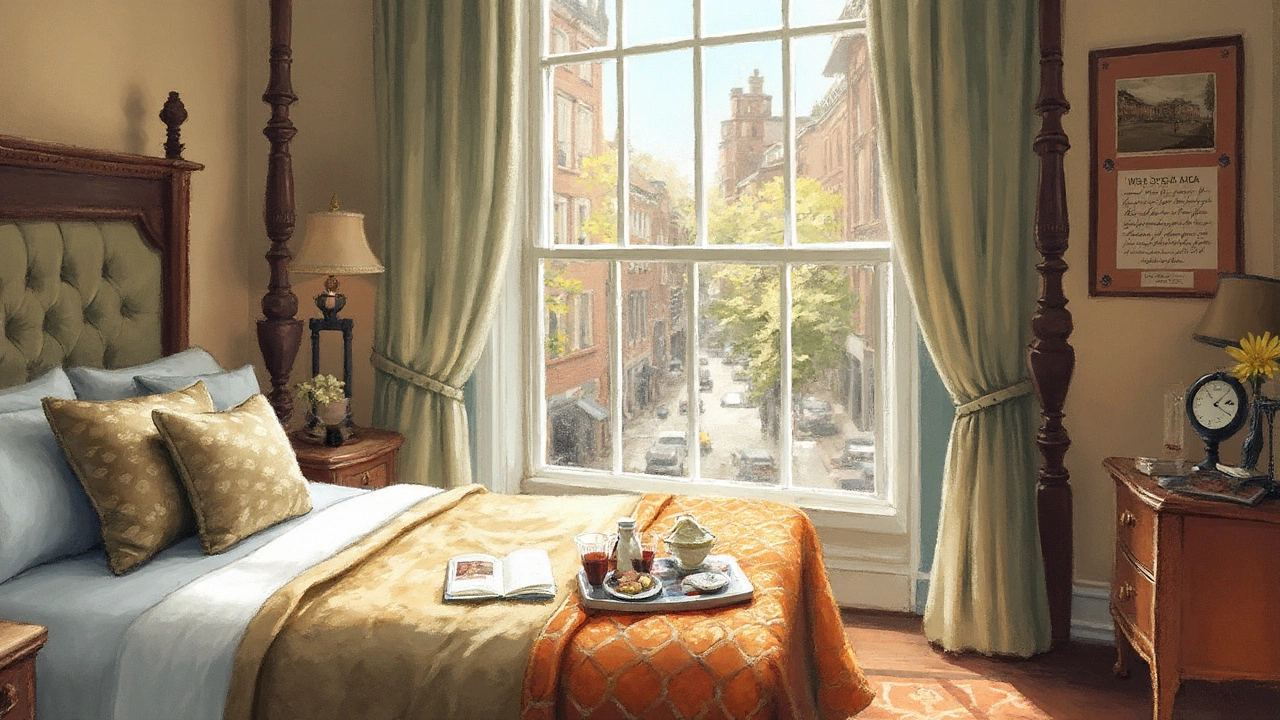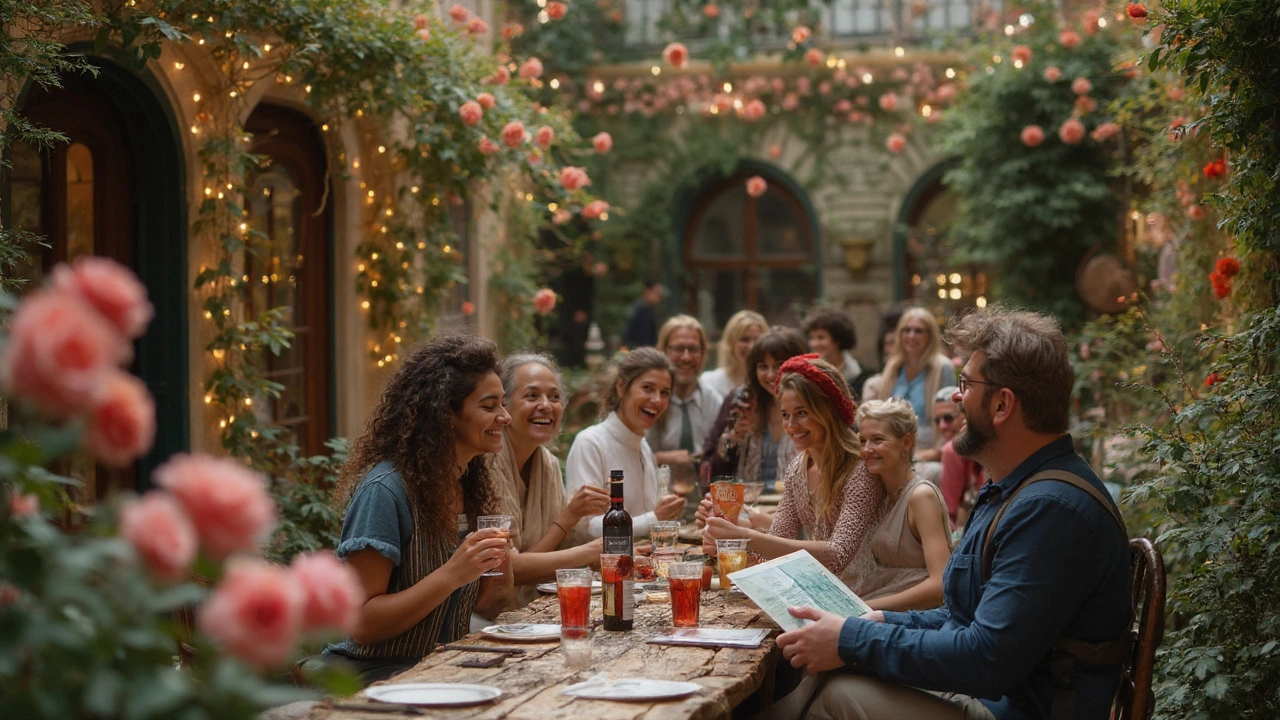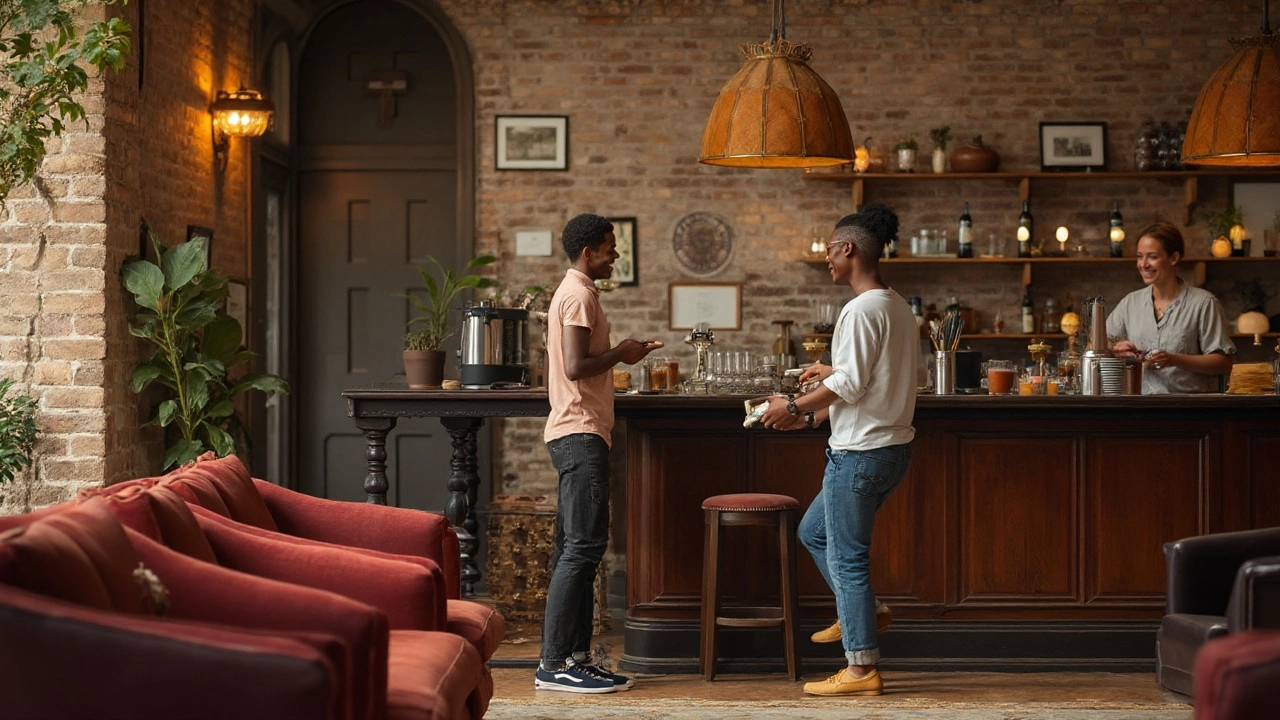If your idea of a hotel involves endless identical corridors and bland décor, it’s time to throw out the old playbook. The word "boutique hotel" gets tossed around a lot these days, but have you ever stopped to wonder what it actually means? If you've stayed in one or scrolled through drool-worthy travel Instagrams, you probably know they're nothing like typical chain hotels. From jaw-dropping design to a level of personal attention that feels almost like staying at a friend’s house—just with better sheets—boutique hotels promise an experience that’s hard to mimic elsewhere. But what’s really behind the label, and why have they become the talk of the travel world over the past few decades?
The True Definition of a Boutique Hotel
It’s funny—no universal agency ever set down a strict definition for "boutique hotel." Yet, people tend to know one when they see (or stay in) it. The term first snuck onto the scene in the 1980s (New York gets the credit, if you’re curious), describing small, stylish hotels that tossed out the cookie-cutter templates of corporate chains. Ian Schrager and Steve Rubell, infamous for Studio 54, are often named the original trendsetters. They opened Morgans Hotel in Manhattan in 1984, describing it as a “boutique,” like a fashion house—you see where they were going with that, right?
A boutique hotel is typically small—most often boasting fewer than 100 rooms, though some places stretch this rule. It’s all about personality. The experience is layered with details, from quirky art and handmade soap to music that you’d want on your road trip playlist. Each one has its own story, something you’ll often hear the staff share over seated check-ins or signature cocktails.
The real clincher? Most boutique hotels are locally owned or individually managed, not operated by international conglomerates. This means the owners’ personalities and values are woven into everything—sometimes literally, like upcycled fabrics from local designers or vintage photos of the city lining the walls. They don’t just want your head in a bed at night; they want your heart in the destination.
Don’t confuse “boutique” with “luxury,” though. While many fall into the luxury hotel bracket, you’ll also find affordable gems that focus on creativity and experience over flash. So, size plus style plus a unique story and heaps of personal service—that’s your boutique recipe right there.
Distinctive Design and Atmosphere
If you’ve ever walked into a boutique hotel lobby and felt like you’d accidentally stepped into a cool friend’s living room, you get the vibe they’re going for. These spaces thrive on individuality. There’s no “one look fits all” here. Designers and owners lean into the location’s heritage, pop culture references, music, art, you name it. Want to sip an artisan coffee under a preserved 17th-century ceiling or crash in a former Victorian schoolhouse turned hotel? Boutique hotels turn these ideas into Instagrammable realities.
The color palettes, lighting, and even scent choices are obsessively curated. Designers sometimes collaborate with local artists—think colorful murals by people who grew up down the road, bespoke ceramics from the next village over, or upcycled furniture rescued from a historic Irish pub. Some spaces ooze romance, with plush velvet sofas and candlelight, while others keep things playful with mismatched retro furniture or tongue-in-cheek wallpaper patterns that tell a story if you look closely enough.
Architecture also sets boutique hotels apart. Expect to see heritage buildings with original features celebrated (not covered), like exposed brick or stonework, ornate iron, or reclaimed wood beams. The goal? To draw guests into a sense of place, not transport them away from it. Dublin’s boutique hotels, for example, might nod to the city’s literary history or its love for live music. In contrast, a seaside spot on the Wild Atlantic Way could showcase nautical touches and salty sea air right in public spaces.
There’s also an intentional focus on communal spaces—lounges, libraries, rooftop gardens—where guests can mingle or curl up solo. The difference is, these spots feel alive, not sterile. You can usually tell how much a boutique hotel values atmosphere by how many cozy nooks it hides away for you to discover on your own.

Personalized Service and Local Character
Here’s where boutique hotels really flex their muscles. Forget mass-produced guest experience. Instead, the staff pride themselves on remembering your coffee order or recommending their favorite local wine bar instead of shoving a generic tourist map your way. This attention to detail makes guests feel welcome—like a regular, even if it’s your first visit.
The hotel might partner with nearby small businesses, like hosting cheese tastings with the local creamery or setting up in-room spa treatments from a neighborhood therapist. Some go all out, organizing surfing lessons in Sligo, graffiti tours in Belfast, or literary pub crawls if you’re visiting Dublin. Little touches, like fresh pastries from the bakery next door for breakfast or bespoke city guides, remind you who and where you are.
Here’s something that trips up first-timers: don’t expect each stay to be identical. While chain hotels push consistency, boutique hotels aim for authenticity. No two rooms may be exactly alike. Different layouts, different artwork, and sometimes even distinctive wallpaper choices for each room make for a unique experience every time.
Solo travelers love boutique hotels because they often create instant community. At breakfast or in the lounge, striking up conversations comes easily. Many spaces host cocktail hours or evening events—think book nights, live music, or even pop-up yoga classes. The staff’s deep roots in the area come through in the personal recommendations you won’t find in mainstream guides.
Who Chooses Boutique Hotels and Why?
So, who gravitates towards boutique hotels? That’s shifted over time. In the early days, they attracted creative types—design lovers, young professionals, and artists drawn in by a hotel’s playlist as much as its pillow-top mattresses. These days, the audience is much broader. Anyone craving experiences over "things” seems keen on boutique stays, from families who want to avoid cookie-cutter rooms to business travelers tired of the same old keycard shuffle.
Couples love boutique hotels’ romantic atmospheres—intimate gardens, rooftop cocktail bars with starlit views, or cozy fireplaces for rainy nights. In some places, solo travelers book extended stays just for the social energy and sense of security that a tight-knit property provides.
There’s also a big shift in the travel landscape: more people want sustainable, ethical options. Boutique hotels often lead the pack here, championing responsible tourism way before it went mainstream. You’ll find properties that ditch single-use plastics, prioritize local sourcing, and sometimes even offset your stay’s carbon footprint. That’s refreshing for travelers who care about their impact on local communities and the planet.
Let’s not pretend: the search for Instagrammable moments drives a lot of boutique hotel bookings, too. A striking marble staircase, a claw-foot tub with city views, or an epic neon sign out front—each stays with you long after check-out. Boutique properties know how to play this game, but they also deliver substance behind the style.

How Boutique Hotels Are Changing Travel
Take a look around and it’s easy to see how the boutique hotel trend is shaking up the industry. Travelers of all ages want deeper connections and meaningful experiences—something chain hotels, with all their predictability, have struggled to match. Boutique hotels have sparked competition, forcing bigger chains to re-think everything from lobby design to guest perks.
There’s even a rise in “lifestyle brands”—think Marriott’s Autograph Collection or Hilton’s Curio Collection—trying their hand at the boutique feel, cherry-picking independent hotels or designing their own. You can spot the influence everywhere: major chains offering “Experience Curators,” personalized minibars, locally sourced breakfast spreads, and bold lobby art just to capture a bit of that boutique magic.
But authenticity isn’t so easy to replicate. Travelers are sharp; they spot the difference between genuine passion and a hastily slapped-on mural. The properties that truly thrive are the ones where guests can feel the vision and love poured into every detail, from greeting to goodbye.
The boutique trend also breathes new life into once-forgotten spaces. Across Europe, you’ll find hotels opening in old lighthouses, Victorian banks, post offices, and even former factories. These creative reuses save historic buildings from neglect and give guests a peek behind their city’s curtain. Some places even pair their rooms with local creative projects, like artist-in-residence programs or rotating exhibitions, making a visit a two-way cultural exchange.
Not sure if a boutique hotel is right for your next trip? A few tips: always check reviews for mentions of real personal touches, chatty and helpful staff, and unique local partnerships. If the hotel website proudly names its designer or owner, and puts a spotlight on their community, you’re probably looking at a true boutique. And remember, the best spots often book up fast, especially in music-loving cities like Dublin or festival hotbeds on the Irish coast.
If you care about community-driven tourism, good design, and being treated like a guest, not a statistic, give a boutique hotel a try next time. You’ll walk away with more than just another "room with a view"—you’ll become part of a story written for people who like life with a bit of flavour and a lot of personality. Now, who wouldn’t want a piece of that?
